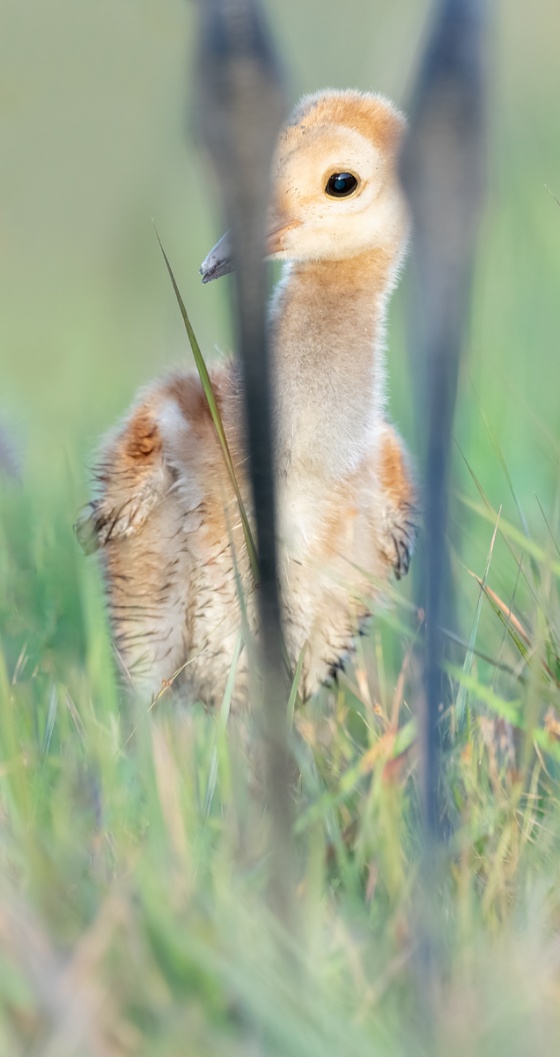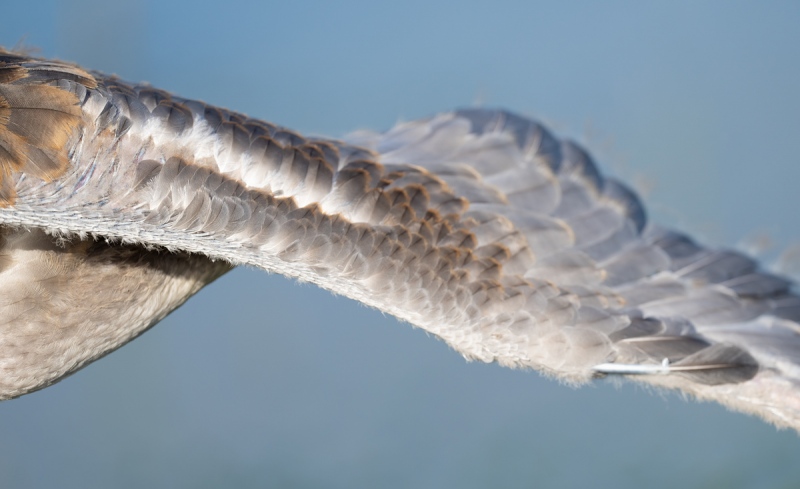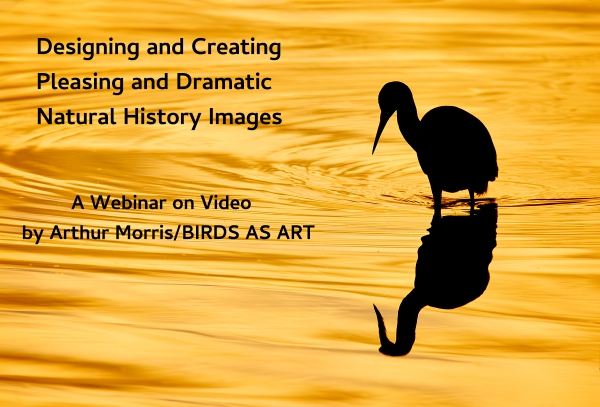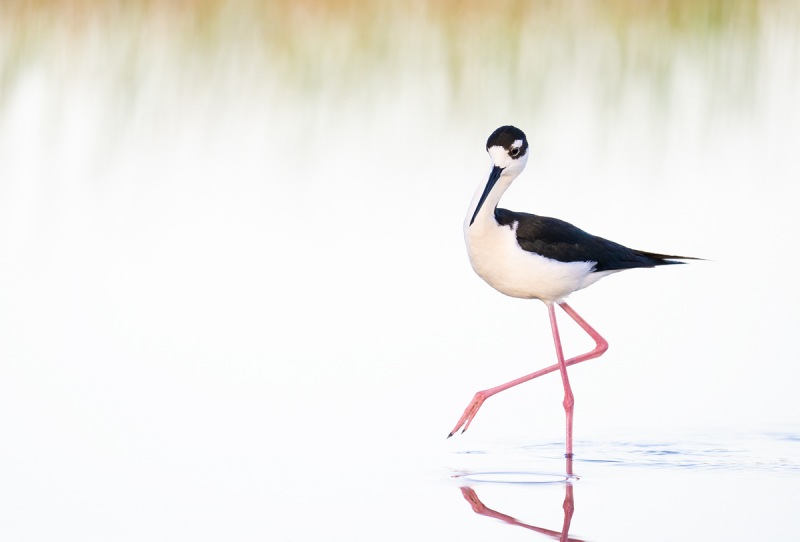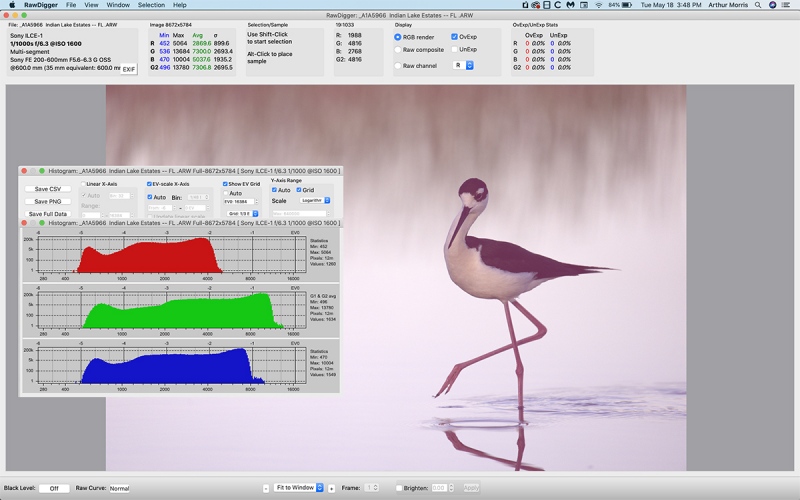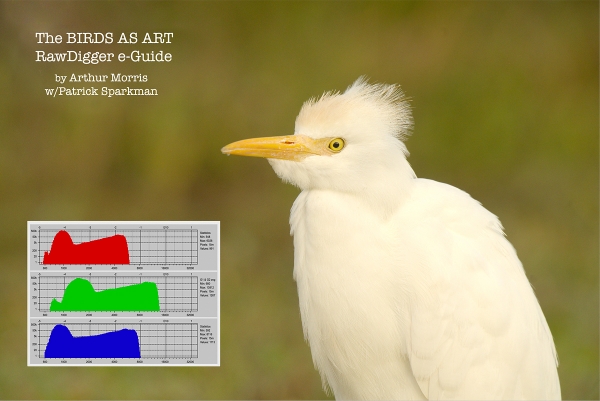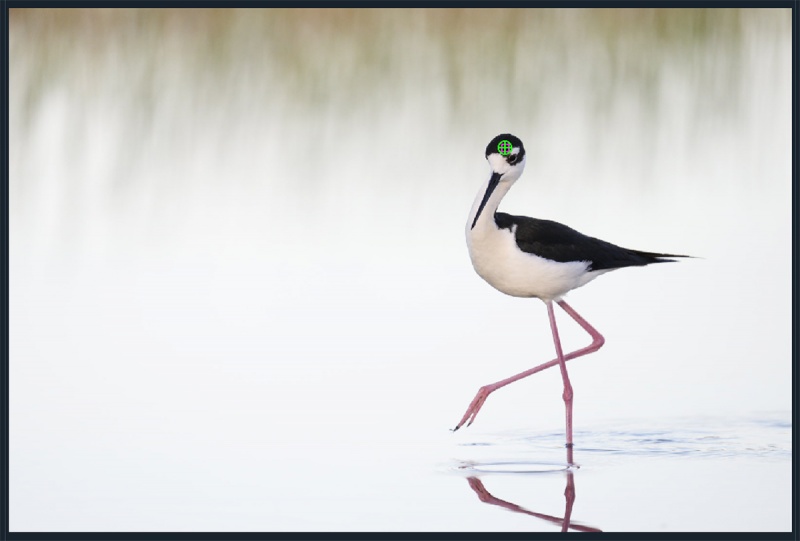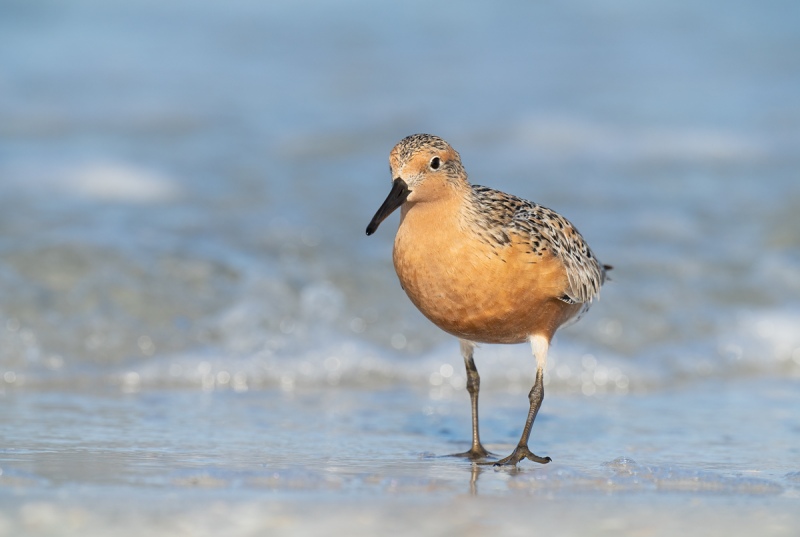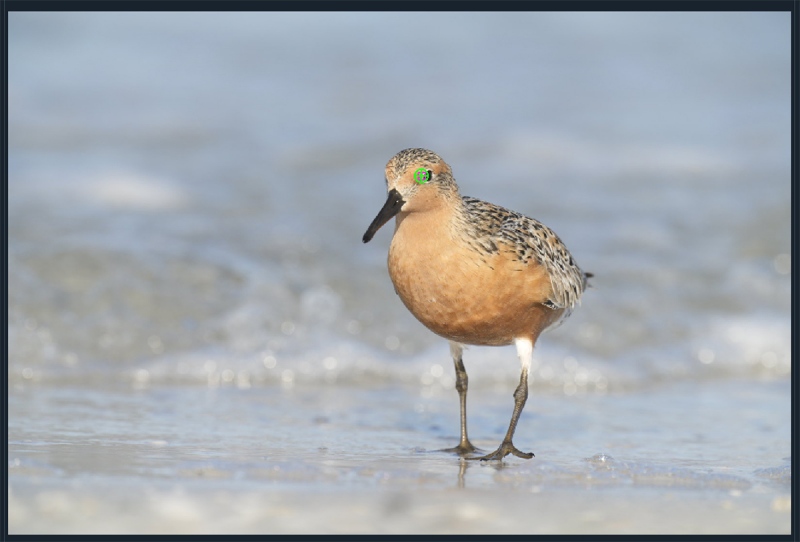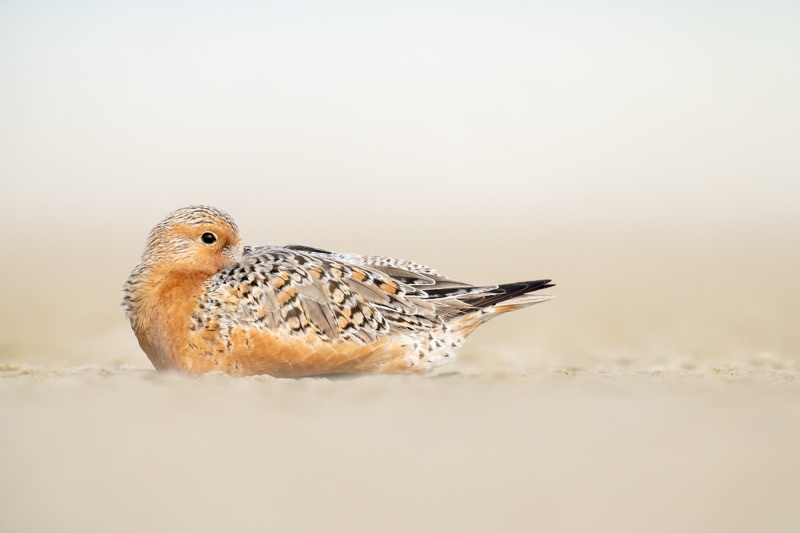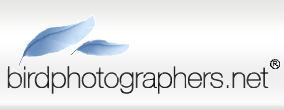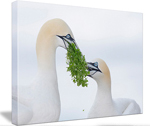May 20th, 2021 What’s Up?
Ye of little faith …
On Wednesday morning, in perfect conditions, Anita, Clemens, and I made our way into the marsh at 6:40am. We did not see a single Black-necked Stilt anywhere. It seemed as if we were in a dead zone. I said, “I’m outta here,” and headed north for the two small chicks (by car). I did OK. Like me, Anita was not optimistic and headed to the south end of the marsh. When she returned, Clemens was ecstatic; his patience had been rewarded when two stilts landed right in from of him, courted, and copulated. Facing him! Then two more showed up for a battle royale. His final reward was a single stilt bathing. Anita had chased a dive-bathing Osprey and got a great image of the bird shaking out in flight after its bath. I hooked back up with them at about 8:00am; we all worked the edge of the marsh and enjoyed some really good chances with the two large crane colts and their parents. And finally, with a young Green Heron.
That evening we decided to head to Lake Blue Cypress for sunset … We left the dock at about 6:00pm and took a beating on the way across the lake as we headed into a stiff northeasterly wind. Once we got in the lee of the eastern shore we were fine. We had a decent sunset. For the better part of the evening, we did scenic photography with the occasional landing Osprey thrown in for good measure. We got back to the dock at 8:45pm and headed home well past my usual bedtime.
Today is Thursday 20 May 2021. The forecast for ILE is calling for partly cloudy with a northeast wind. Partly cloudy at ILE usually means clear as a bell. The three of us will be back down in the marsh. It is likely that Anita and I will be more patient than we were this morning. I have neglected to mention that the weather here for the past five days has been quite strange for May in central Florida. Morning and later afternoons have been cool and there has been a pretty decent cool breeze each day as we’ve dined on the pool deck, sort of like October on Long Island …
Wherever you are, and whatever you are doing, I hope that you have a great day.
This blog post took about two hours to prepare and makes 147 consecutive days with a new one. Please remember that if an item — a Delkin flash card, or a tripod head — for example, that is available from B&H and/or Bedfords and is also available in the BAA Online Store, it would be great if you opt to purchase from us. We will match any price. Please remember also to use my B&H affiliate links or to save 3% at Bedfords by using the BIRDSASART discount code at checkout. Doing either often earns you free guides and/or discounts. And doing so always earns my great appreciation.
Please Remember
With income from IPTs now at zero, please, if you enjoy and learn from the blog, remember to use one of my two affiliate programs when purchasing new gear. Doing so just might make it possible for me to avoid having to try to get a job as a Walmart greeter and will not cost you a single penny more. And if you use Bedfords and remember to enter the BIRDSASART code at checkout, you will save 3% on every order and enjoy free second-day air shipping. In these crazy times — I am out at least forty to sixty thousand dollars so far due to COVID 19 (with lots more to come) — remembering to use my B&H link or to shop at Bedfords will help me out a ton and be greatly appreciated. Overseas folks who cannot order from the US because of import fees, duties, and taxes, are invited to help out by clicking here to leave a blog thank you gift if they see fit.
New and Better Bedfords Discount Policy!
You can now save 3% on all of your Bedfords photo gear purchases by entering the BIRDSASART coupon code at checkout. Your discount will be applied to your pre-tax total. In addition, by using the code you will get 2nd day air shipping via Fed Ex.
Grab a Nikon AF-S Teleconverter TC-14E III and save $14.99. Purchase a Canon EOS R5 and your discount will be $116.97. Purchase a Sony FE 600mm f/4 GM OSS lens and save a remarkable $389.94! Your Bedford’s purchase no longer needs to be greater than $1,000.00 for you to receive a discount. The more you spend, the more you save.
Money Saving Reminder
Many have learned that if you need a hot photo item that is out of stock at B&H and would enjoy free second-day air shipping, your best bet is to click here, place an order with Bedfords, and enter the coupon code BIRDSASART at checkout. If an item is out of stock, contact Steve Elkins via e-mail or on his cell phone at (479) 381-2592 (Central time). Be sure to mention the BIRDSASART coupon code and use it for your online order to save 3% and enjoy free 2nd-day air shipping. Steve has been great at getting folks the hot items that are out of stock at B&H and everywhere else. The wait lists at the big stores can be a year or longer for the hard to get items. Steve will surely get you your gear long before that. For the past year, he has been helping BAA Blog folks get their hands on items like the SONY a9 ii, the SONY 200-600 G OSS lens, the Canon EOS R5, the Canon RF 100-500mm lens, and the Nikon 500mm PF. Steve is personable, helpful, and eager to please.


Gear Questions and Advice
Too many folks attending BAA IPTs (remember those?) and dozens of photographers whom I see in the field and on BPN, are–out of ignorance–using the wrong gear especially when it comes to tripods and more especially, tripod heads… Please know that I am always glad to answer your gear questions via e-mail
Out of the Crane Box #1
This image — a photo illustration if you would, was created from a horizontal original that included the second chick and the bill of the adult whose legs remain in the photo to frame the chick. The bill of the adult was cloned away and I did some work on the grass as well. If you would like to see the JPEG that represents the original frame, please click here.
Like It or Hate It?
Like it or hate it. Why?
|
|
|
This image was created on 19 May 2021 by Anita North. She used the hand held Sony FE 600mm f/4 GM OSS lens and The One, the Sony Alpha 1 Mirrorless digital camera. ISO 500. Exposure determined via Zebras with ISO on the rear dial: 1/2500 sec. at f/4 (wide open) in Manual mode. AWB at 8:34am on a clear, sunny morning.
Wide/AF-C was active at the moment of exposure. Click on the image to see a larger version.
Image #2: Stretched wing detail of Sandhill Crane colt
Image courtesy of and Copyright 2021 Anita North
|
Out of the Crane Box #2
When I saw one of the big colts do a wingstretch right in front of Anita, I wanted to call out, “Shoot the wing,” but there was no time so I went back to what I was doing. The bird was much too close to her for anything but an out of the box body parts image. A few hours later I walked by her open laptop and lo and behold, there was Image #2. She was in the next room so I called out, “Anita, I am so proud of you for getting the wing shot!”
|
|
Designing and Creating Pleasing and Dramatic Natural History Images
A Video Webinar: $30 by electronic download
Order your copy by clicking here.
|
Designing and Creating Pleasing and Dramatic Natural History Images
A Video Webinar
In this 1 hour 28 minute plus video you will learn and be inspired. We cover everything from the very basics to the fine points. After a brief bio, the topics include Behavior, Action, Diagonal Lines, and the Cuteness Factor; Birds in Flight — The Holy Grail of Bird Photography; Mis-Framing!; Basic Image Design/HORIZONTALS: Get the subject out of the center of the frame. Basic Image Design/VERTICALS: The center of the frame is generally fine; The Importance of BACKGROUND; Isolating the Subject; Other Elements of Composition; On Getting Low; Going Wide for Bird-scapes; Super-tight!; Working in Sunny Conditions; Working in Cloudy Conditions; Working in Foggy Conditions; Working in the Shade; Working in Bad Weather; Creating Back-lit Images; Creating Silhouettes; and Creating Pleasing Blurs.
Each segment of the program consists of an average of about 15 images that will drive home the points being made, educate you, and inspire. The instructions and advice, given clearly and concisely, are based on my near-38 years of experience photographing birds with telephoto and super-telephoto lenses. And on several decades of creating educational blog posts.
This presentation is based on the webinar that I did for the South Shore Camera Club in April. You can find some of the comments below along with comments from two of the folks who viewed the webinar the night before the DeSoto IPT began.
You can order your copy of Designing and Creating Pleasing and Dramatic Natural History Images/A Video Webinar by clicking here or by calling Jim with your credit card in hand at 863-692-0906.
Typos
With all blog posts, feel free to e-mail or to leave a comment regarding any typos or errors.
May 19th, 2021 What’s Up?
Clemens Van der Werf, Anita North, and I sat in the marsh on a gorgeous Tuesday morning. The courtship behaviors and the number of squabbles have gone way down but we had some good chances with several Black-necked Stilts feeding in still blue water tinged by the reflections of some grey clouds in the southwest. Clemens and Anita went off to photograph the Mother’s Day II chicks and I headed home early to finish yesterday’s blog post.
With both shoulders pain free and feeling much stronger, I’ve gotten back in the pool for the past three days.
Today is Wednesday 19 May 2021. Clemens and Anita had so much fun with the stilts and the new crane babies that Clemens’ boat will again be staying in the driveway while we head down to the marsh.The weather looks good with mostly clear skies and a northeast wind. Wherever you are, and whatever you are doing, I hope that you have a great day.
This blog post took about ninety minutes to prepare and makes 146 consecutive days with a new one. Please remember that if an item — a Delkin flash card, or a tripod head — for example, that is available from B&H and/or Bedfords and is also available in the BAA Online Store, it would be great if you opt to purchase from us. We will match any price. Please remember also to use my B&H affiliate links or to save 3% at Bedfords by using the BIRDSASART discount code at checkout. Doing either often earns you free guides and/or discounts. And doing so always earns my great appreciation.
Care For a YouTube Smile?
Click here to view Kids Meet a 101 Year Old from Hi Ho Kids.
With Zebras, Eye Tracking AF, & Topaz, Is Bird Photography Too Easy Now?
SONY Zebras allow folks to consistently get near-perfect exposures even in changing light. The latest eye/face/bird tracking AF systems truly are science-fiction like. Topaz DeNoise allows us to work at high ISOs while paying only a small penalty if the images are properly exposed. Topaz Sharpen AI does a great job with small errors of motion blur. And with or without Zebras, RawDigger enables serious photographers to learn to fine-tune their exposures.
So is bird photography too easy now?
It is surely easier but nowhere near too easy. You still need to get up early and slog around in the mud. Or walk for mile (with still relatively heavy gear). You still need to know how to evaluate and analyze sky conditions, wind direction, and the quality and direction of the lights.You still need to study the behavior of your subjects in order to maximize your chances. As good as the new AF systems are, you need to study them long and hard in order to get the most out of them. Many folks listening to the know-nothing, online gurus have their cameras set up so poorly that it is a wonder that they ever make a single sharp image, much less a sharp image of a bird in flight. That is why the various BAA Camera User’s e-Guides have been so successful. And lastly, you still need to know what makes a good image.
And as good as the AF systems are, the photographer is still the one who has to point the lens in the right direction to come up with the image design they are looking for. (And to keep the lens still.) There is and will never be an Auto Composition system …
Creativity, intelligence, determination, good sharpness techniques, camera handling skill, and some degree of strength, stamina, hand-eye coordination, good reflexes, and fine motor skills are all needed if one is to become at least a good bird photographer. And field-craft is an oft-overlooked factor; how skilled are you at getting close to free and wild birds? Yes, it is a plus to have the latest/greatest gear, but the factors mentioned above are far more important than what camera and lens you are holding. That said, the recent technological advances have enabled me and many others to make better and better images on a consistent basis, especially of birds in flight and in action.
Did I leave anything out? Do you think that bird photography is too easy now?
|
|
|
This image was created on 17 May 2021 in a marsh down by the lake at ILE. While seated on a milk Crate, I used the hand held Sony FE 200-600mm f/5.6-6.3 G OSS lens (at 600mm) and The One, the Sony Alpha 1 Mirrorless digital camera. ISO 640. Exposure determined via Zebras with ISO on the rear dial: 1/1000 sec. at f/6.3 (wide open) in Manual mode. The exposure was confirmed as perfect by RawDigger. AWB at 7:10am when a big cloud covered the sun for a bit.
Wide/AF-C was active at the moment of exposure and performed just about perfectly. Click on the image to see a larger version.
Image #1: Black-necked Stilt walking elegantly
|
Ballerino or Danseur Noble (FR)
Just as a big cloud slid in front of the sun, this male Black-necked Stilt strode by right in front of me and my milk crate. I grabbed the 2-6 off of my work table — another milk crate — to my left, leaned to my right around the tripod mounted 600 GM, dialed up the ISO, and fired off perhaps a half dozen frames. This one, with the balletic pose, was magical. The raised foot with the bill perfectly centered on the white neck gives the bird a quite elegant look. At least from where I sit.
Ballerino is slang for a male ballet dancer, and danseur noble is the French version. The bird in Image #1 certainly qualified, if only for a brief instant in time.
|
|
Image #1A: RawDigger screen capture for the Black-necked Stilt walking elegantly image
|
RawDigger Screen Capture
Though RawDigger showed the raw file brightness for this image to be just about perfect with the G channel two-thirds of the way from the 8000 line to the 16000 line, I brightened the image considerably in post: Exposure +0.65, Whites +12, and Shadows +8. Low light/high key images require some fancy stepping in Photoshop. Note that in no light/low light situations, it is simply impossible to reveal the ruby red irises of this species.
|
|
RawDigger e-Guide with Two Videos
|
The RawDigger e-Guide with Two Videos
by Arthur Morris with Patrick Sparkman
The RawDigger e-Guide was created only for serious photographers who wish to get the absolute most out of their raw files.
Patrick and I began work on the guide in July 2020. At first we struggled. We asked questions. We learned about Max-G values. We puzzled as to why the Max G values for different cameras were different. IPT veteran Bart Deamer asked lots of questions that we could not answer. We got help from RawDigger creator Iliah Borg. We learned. In December, Patrick came up with an Adapted Histogram that allows us to evaluate the exposures and raw file brightness for all images created with all digital camera bodies from the last two decades. What we learned each time prompted three complete beginning to end re-writes.
The point of the guide is to teach you to truly expose to the mega-Expose-to-the-Right so that you will minimize noise, maximize image quality, best utilize your camera’s dynamic range, and attain the highest possible level of shadow detail in your RAW files in every situation. In addition, your properly exposed RAW files will contain more tonal information and feature the smoothest possible transitions between tones. And your optimized images will feature rich, accurate color.
We teach you why the GREEN channel is almost always the first to over-expose. We save you money by advising you which version of RawDigger you need. We teach you how to interpret the Max G values for your Canon, Nikon, and SONY camera bodies. It is very likely that the Shock-your-World section will shock you. And lastly — thanks to the technical and practical brilliance of Patrick Sparkman — we teach you a simple way to quickly and easily evaluate your exposures and raw file brightness using an Adapted RawDigger histogram.
The flower video takes you through a session where artie edits a folder of images in Capture One while checking the exposures and Max-G values in RawDigger. The Adapted Histogram video examines a series of recent images with the pink histograms and covers lots of fine points including and especially how to deal with specular highlights. The directions for setting up the Adapted Histogram are in the text.
If we priced this guide based on how much effort we put into it, it would sell it for $999.00. But as this guide will be purchased only by a limited number of serious photographers, we have priced it at $51.00. You can order yours here in the BAA Online Store.
|
|
Image #1B: AF Point for the Black-necked Stilt walking elegantly image
|
Sony Alpha a1 AF
Barring operator error, the performance of the Sony Alpha a1 AF system at any focal length — including 1200mm as seen in recent blog posts — is, when the a1 is set up properly as detailed in the in e-mails to the Sony Alpha a1 Info & Updates group, more than remarkable. Early on, there was lots of discussion within the group with many preferring multiple back button approaches. For me a simple shutter button approach with the right AF settings that yield 99% sharp-on-the-eye images is best. By far. It is super-simple and mega-effective. In the next SONY Alpha a1 Set-up and Info Group e-mail, I will be sharing what I have learned as to when and it what situations it is best to abandon Wide. And with what. The group has already learned to limit the AF Area choices and to switch AF Areas quickly and conveniently. The default method of switching AF points with the C2 button is both slow and cumbersome.
SONY Alpha a1 Set-up and Info Group
The SONY Alpha a1 Set-up and Info Group is going great guns as folks chime in with thoughtful questions and experience-based advice. We are now up to an astounding 46 lucky folks. Early on, we discussed the myriad AF options. I gave my opinion as to the best one for flight and general bird photography. More recently, we have been in contact with folks at SONY sharing our thoughts, experiences, and frustrations with the EVF blackout problem.
All who purchased their Alpha a1 bodies via a BAA affiliate link will receive a free subscription to the Sony Alpha a1 Set-Up and Info Updates after shooting me their receipts via e-mail. (Note: it may take me several days to confirm B&H orders.) This same service may be purchased by anyone with an a1 body via a $150.00 PayPal sent to birdsasart@verizon.net indicating payment for Alpha a1 Info Updates. Alternatively, folks can call Jim weekdays at 1-863-692-0906 to pay via credit card. New members will receive composite e-mails that summarize all previous discussions.
Typos
With all blog posts, feel free to e-mail or to leave a comment regarding any typos or errors.
May 18th, 2021 What’s Up?
Paradise Lost
On Monday morning, Anita North and I returned to our favorite Black-necked Stilt spot. For the most part, the birds did not cooperate. I took a walk with my tripod-mounted 600 GM/1.4X/ai and my milk crate and found a cooperative stilt in a nice setting and worked low with the legs of my tripod splayed so that I was working with the lens about nine inches above the surface of the water. I got some very nice stuff.
Paradise Found
We ended early and ran into ILE-neighbor John. He drives down most mornings to check on the crane families. He told me that he had heard of (but not seen) two recently-hatched chicks and directed us to the spot. We drove down, found the family, and realized that the pair that had lost two half-grown colts had double clutched, that is, re-nested successfully. Best of all, both the adults and the chicks are very tame. It is looking like a repeat of the 2020 Mother’s Day tale. I wish them luck while counting my blessings. Coincidentally, we had seen a Bobcat sun-bathing the morning before about a half mile from the new family … I will be calling this family Mother’s Day II.
Today
Today is Tuesday 18 May 2021. Clemens Van der Werf arrived last night and we had planned on an outing on his flats boat for this morning. But after seeing our images of the Black-necked Stilts and the tiny, brand new Mother’s Day II chicks, we will all be heading down to the marsh with our milk crates. The forecast for this morning if for partly cloudy with a breeze from the northeast. Wherever you are, and whatever you are doing, I hope that you have a great day.
This blog post took about an hour to prepare and makes 145 consecutive days with a new one. Please remember that if an item — a Delkin flash card, or a tripod head — for example, that is available from B&H and/or Bedfords and is also available in the BAA Online Store, it would be great if you opt to purchase from us. We will match any price. Please remember also to use my B&H affiliate links or to save 3% at Bedfords by using the BIRDSASART discount code at checkout. Doing either often earns you free guides and/or discounts. And doing so always earns my great appreciation.
Please Remember
With income from IPTs now at zero, please, if you enjoy and learn from the blog, remember to use one of my two affiliate programs when purchasing new gear. Doing so just might make it possible for me to avoid having to try to get a job as a Walmart greeter and will not cost you a single penny more. And if you use Bedfords and remember to enter the BIRDSASART code at checkout, you will save 3% on every order and enjoy free second-day air shipping. In these crazy times — I am out at least forty to sixty thousand dollars so far due to COVID 19 (with lots more to come) — remembering to use my B&H link or to shop at Bedfords will help me out a ton and be greatly appreciated. Overseas folks who cannot order from the US because of import fees, duties, and taxes, are invited to help out by clicking here to leave a blog thank you gift if they see fit.
New and Better Bedfords Discount Policy!
You can now save 3% on all of your Bedfords photo gear purchases by entering the BIRDSASART coupon code at checkout. Your discount will be applied to your pre-tax total. In addition, by using the code you will get 2nd day air shipping via Fed Ex.
Grab a Nikon AF-S Teleconverter TC-14E III and save $14.99. Purchase a Canon EOS R5 and your discount will be $116.97. Purchase a Sony FE 600mm f/4 GM OSS lens and save a remarkable $389.94! Your Bedford’s purchase no longer needs to be greater than $1,000.00 for you to receive a discount. The more you spend, the more you save.
Money Saving Reminder
Many have learned that if you need a hot photo item that is out of stock at B&H and would enjoy free second-day air shipping, your best bet is to click here, place an order with Bedfords, and enter the coupon code BIRDSASART at checkout. If an item is out of stock, contact Steve Elkins via e-mail or on his cell phone at (479) 381-2592 (Central time). Be sure to mention the BIRDSASART coupon code and use it for your online order to save 3% and enjoy free 2nd-day air shipping. Steve has been great at getting folks the hot items that are out of stock at B&H and everywhere else. The wait lists at the big stores can be a year or longer for the hard to get items. Steve will surely get you your gear long before that. For the past year, he has been helping BAA Blog folks get their hands on items like the SONY a9 ii, the SONY 200-600 G OSS lens, the Canon EOS R5, the Canon RF 100-500mm lens, and the Nikon 500mm PF. Steve is personable, helpful, and eager to please.


Gear Questions and Advice
Too many folks attending BAA IPTs (remember those?) and dozens of photographers whom I see in the field and on BPN, are–out of ignorance–using the wrong gear especially when it comes to tripods and more especially, tripod heads… Please know that I am always glad to answer your gear questions via e-mail
|
|
|
This image was created on 10 May 2021 on the first morning of my recent busman’s holiday at Fort DeSoto. Working while seated on the sand, I used the Induro GIT 304L/
Levered-Clamp FlexShooter Pro-mounted-Sony FE 600mm f/4 GM OSS lens, the Sony FE 2.0x Teleconverter, and The One, the Sony Alpha 1 Mirrorless Digital Camera (Body Only). ISO 800. The exposure was determined by Zebras with ISO on the rear wheel: 1/1000 sec. at f/9 (stopped down 1/3 stop) in Manual mode. AWB at 8:26am on a sunny morning.
Tracking: Expand Spot/AF-C was active at the moment of exposure and performed perfectly. Click on the image to enjoy a larger version.
Image #1: Red Knot almost fully molted into breeding plumage — in the Gulf surf
|
In Search of the Perfect Field Guide Portrait
I headed back to DeSoto in hopes of finding a Red Knot in 100% breeding plumage and creating the perfect field guide portrait, an image from the side showing the spectacularly patterned feathers of the back and the coverts of a fully molted bird. This bird was pretty close, but never turned to give me the profile shot I wanted …
|
|
Image #1A: AF Point screen capture for the Red Knot almost fully molted into breeding plumage — in the Gulf surf image
|
You-Gotta-Be-Kidding-Me AF Performance
Can your camera body detect and track the eye of an active shorebird as it forages along the edge of the surf? At 1200mm? The Sony Alpha a1 can. You will not get consistent results unless your camera is set up exactly right. If you own an a1 and are not getting the AF performance that you want and expect, consider joining the SONY a1 Info and Updates group. Scroll down for details.
|
|
|
This image was created on 12 May 2021 on the third morning of my recent busman’s holiday at Fort DeSoto. Working on the Panning Ground Pod, I used the Sony FE 600mm f/4 GM OSS lens, the Sony FE 2.0x Teleconverter, and The One, the Sony Alpha 1 Mirrorless Digital Camera (Body Only). ISO 1000. The exposure was determined by Zebras with ISO on the rear wheel: 1/800 sec. at f/8 (wide open) in Manual mode. AWB at 9:09am in cloudy bright conditions.
Tracking: Expand Spot/AF-C was active at the moment of exposure and performed perfectly. Click on the image to enjoy a larger version.
Image #2: Red Knot partially molted into breeding plumage resting on sand flat
|
Hard Work …
Wednesday morning started off great and I made some Marbled Godwit and Dunlin in heaven images working in the soft light on the Panning Ground Pod. Next was a fishing Snowy Egret in the surf and a close-to-shore diving frigatebird. Then I crawled and rolled my way about 40 yards on a sand flat with the 600 GM/2X TC/a1 along for the ride in an effort to isolate a Red Knot. The only one that I was able to single out was the sleeping bird in Image #2. I was so knackered that morning that I went for a swim in the Gulf.
Anita is headed back to Canada this coming Friday. I just might head over to DeSoto for another busman’s holiday …
Sony Alpha a1 AF
Barring operator error, the performance of the Sony Alpha a1 AF system at any focal length — including 1200mm as in Image #1 above, is, when the a1 is set up properly as detailed in the in e-mails to the Sony Alpha a1 Info & Updates group, more than remarkable. Early on, there was lots of discussion within the group with many preferring multiple back button approaches. For me a simple shutter button approach with the right AF settings that yield 99% sharp-on-the-eye images is best. By far. It is super-simple and mega-effective. In the next SONY Alpha a1 Set-up and Info Group e-mail, I will be sharing what I have learned as to when and it what situations it is best to abandon Wide. And with what. The group has already learned to limit the AF Area choices and to switch AF Areas quickly and conveniently. The default method of switching AF points with the C2 button is both slow and cumbersome.
SONY Alpha a1 Set-up and Info Group
The SONY Alpha a1 Set-up and Info Group is going great guns as folks chime in with thoughtful questions and experience-based advice. We are now up to an astounding 46 lucky folks. Early on, we discussed the myriad AF options. I gave my opinion as to the best one for flight and general bird photography. More recently, we have been in contact with folks at SONY sharing our thoughts, experiences, and frustrations with the EVF blackout problem.
All who purchased their Alpha a1 bodies via a BAA affiliate link will receive a free subscription to the Sony Alpha a1 Set-Up and Info Updates after shooting me their receipts via e-mail. (Note: it may take me several days to confirm B&H orders.) This same service may be purchased by anyone with an a1 body via a $150.00 PayPal sent to birdsasart@verizon.net indicating payment for Alpha a1 Info Updates. Alternatively, folks can call Jim weekdays at 1-863-692-0906 to pay via credit card. New members will receive composite e-mails that summarize all previous discussions.
Typos
With all blog posts, feel free to e-mail or to leave a comment regarding any typos or errors.
|
|




